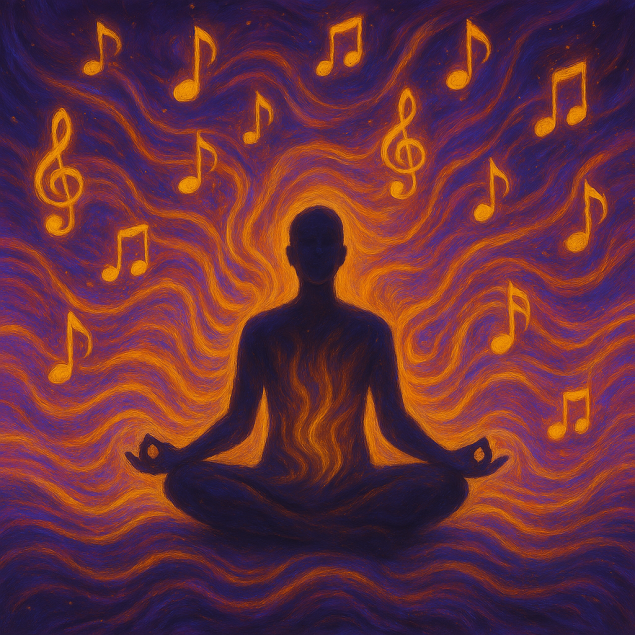246
Emotional anchors: How to take control of feelings in moments of stress

When the world around you collapses and emotions take control of your mind, there is a way to regain control over your feelings.
Imagine: You're standing on the edge of an important interview, your heart is pounding, your palms are sweating. Suddenly, you touch a small object in your pocket and a wave of calm covers you. It's not magic. It's the power of an emotional anchor.
What Are Emotional Anchors and Why They Work
Emotional anchors are a psychological mechanism based on the principles of classical conditioning discovered by Ivan Pavlov. In the context of emotion management, an anchor is a specific stimulus (sound, smell, touch, visual image) that activates a pre-programmed emotional response.
Modern neuroscience explains the effectiveness of anchors through the concept of neuroplasticity. When we repeatedly associate a certain stimulus with a desired emotional state, stable neural connections are formed in the brain. Studies show that such associations can persist for years and be activated in fractions of a second.

The scientific basis of emotional anchors
Dr. Richard Bandler, one of the creators of neurolinguistic programming, conducted extensive research on anchor techniques. A properly set emotional anchor can reduce cortisol (the stress hormone) by 23% in just 30 seconds of activation.
The mechanism of the anchors affects several areas of the brain at the same time:
The amygdala is responsible for emotional memory
The hippocampus links stimulus to context
The prefrontal cortex provides conscious control.
Five powerful techniques for creating emotional anchors
1. Kinesthetic anchor "Point of Power"
Essence: Creating a physical association between touching a specific point in the body and a state of confidence.
Step by step:
Select a point (for example, the area between the thumb and index finger)
Think back to the moment when you felt the most confident.
Immerse yourself in this memory with all your senses.
At the peak of the experience, compress the selected point for 10-15 seconds.
Repeat the procedure 10-15 times during the week
2. Olfactor anchor
Principle: Using smells to instantly change your emotional state.
The olfactory system is directly connected to the limbic system of the brain, bypassing the cortex of the large hemispheres. This makes odor anchors one of the fastest acting.
Recommended aromas:
- Lavender for comfort.
- Mint for concentration.
- Citruses for vigor.
- Vanilla for comfort.
3. Auditory anchor
A certain melody or sound can be a powerful trigger for a positive state. Music therapists claim that compositions in the key do major contribute to the production of serotonin - the hormone of happiness.

4. Visual anchor symbol
Create a personal symbol of power – it could be a photograph, an object, or even a painted sign. It is important that this symbol is unique and has a deep personal meaning for you.
5. Respiratory anchor 4-7-8
The technique developed by Dr. Andrew Weil is based on ancient pranayamas:
- Inhale 4 counts.
- Breathhold by 7 counts
- Exhale 8 bills.
This technique activates the parasympathetic nervous system, naturally reducing stress levels.
Application of anchors in critical situations
Real case: Swiss surgeon Anna Müller uses a kinesthetic anchor before each complex surgery. Touching a certain point on the wrist, she instantly enters a state of “flow” – maximum concentration and calm. Over the five years of using this technique, the percentage of successful operations in its practice increased by 12%.
Emotional anchors are particularly effective in the following situations:
- Public speaking
- Examinations and interviews
- Conflict negotiations
- Medical procedures
- Sports competitions
Rapid recovery strategy
For maximum efficiency, it is recommended to create a “chain of anchors” – a sequence of 3-4 different stimuli that reinforce each other. For example: deep breath (breathing anchor) + touching the amulet (kinesthetic) + remembering the key phrase (auditory).
It's important to remember: Anchors require regular “updates”. Use them not only in stressful situations, but also periodically in a calm state to maintain the strength of the association.
Research and statistics
A 2019 Stanford University study showed impressive results:
87% of participants reported significant reductions in anxiety when using anchor techniques
Recovery of emotional balance decreased by 65% on average
Efficacy continued for 6 months of regular use
Neuroscientist Antonio Damasio points out that emotional anchors activate somatic markers, body signals that help make quick decisions in stressful situations.
Advanced techniques for experienced practitioners
Anchor stacking
The technique of layering several positive states in one anchor. Start by remembering a moment of pride, add a sense of love, then a sense of security. All this is packaged in one physical stimulus.
Anchor collapse
The method of neutralizing negative emotional reactions by simultaneously activating positive and negative anchors. Over time, the negative reaction weakens.
The secret to craftsmanship: The most effective anchors are created in moments of peak emotional states. Don’t miss the opportunity to anchor moments of triumph, love, insight and deep peace.
Conclusion: The Path to Emotional Freedom
Emotional anchors are not just a psychological trick, but a powerful tool of self-regulation based on the fundamental principles of the human brain. By mastering these techniques, you are able to manage your reactions under any circumstances.
Remember, skill comes with practice. Start with one technique, bring it to automatism, then add new tools to your arsenal. Your emotional resilience will be your main competitive advantage in today’s world.
Glossary of terms
Neuroplasticity is the ability of the brain to change its structure and function in response to experience and learning.
Classical conditioning is a type of learning in which a neutral stimulus begins to elicit a response after repeated combination with an unconditional stimulus.
Cortisol is a stress hormone produced by the adrenal glands in response to a stressful situation.
The amygdala is the area of the brain responsible for processing emotions and forming emotional memory.
Somatic markers are bodily sensations that occur when making decisions and help assess their correctness.
The parasympathetic nervous system is the part of the autonomic nervous system responsible for restoring and relaxing the body.
NLP (Neurolinguistic Programming) is an approach to learning and changing human behavior through the analysis of language and thinking.
The limbic system is a group of brain structures responsible for emotion, motivation and memory.
How not to age prematurely. 5 important tips 87-year-old Konchalovsky
10 phrases that you should not say to the boss if you want to be on a good account























